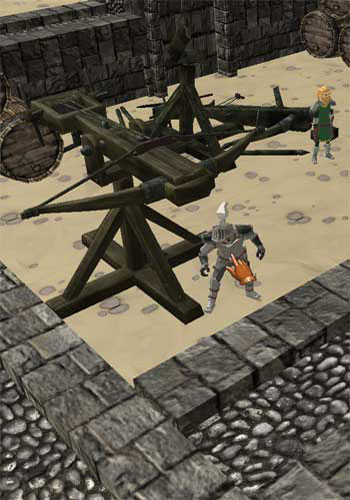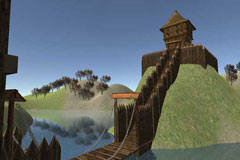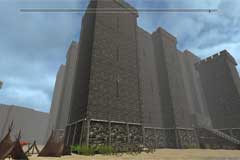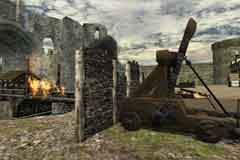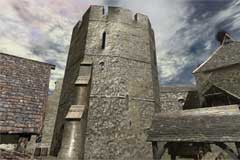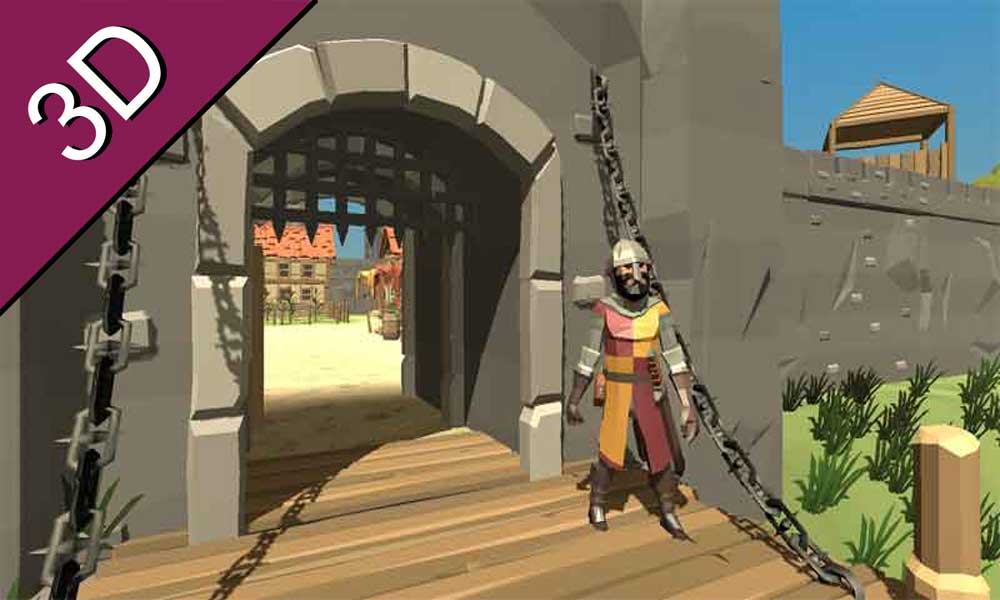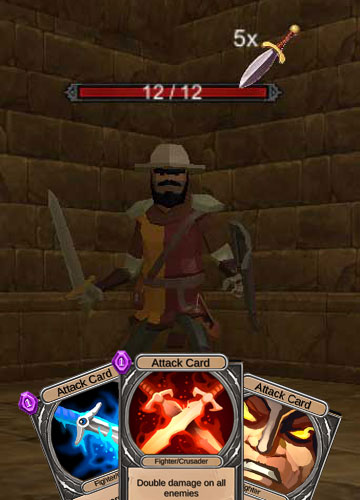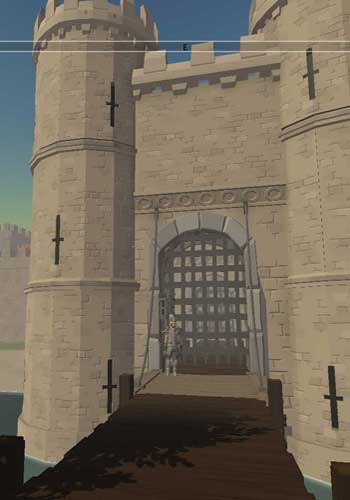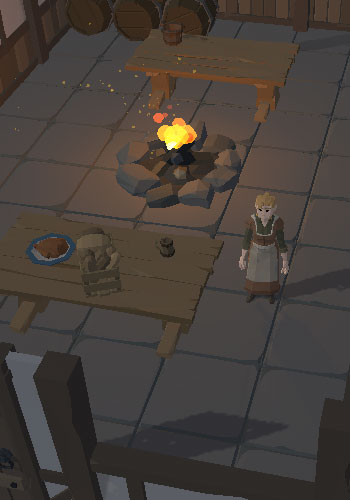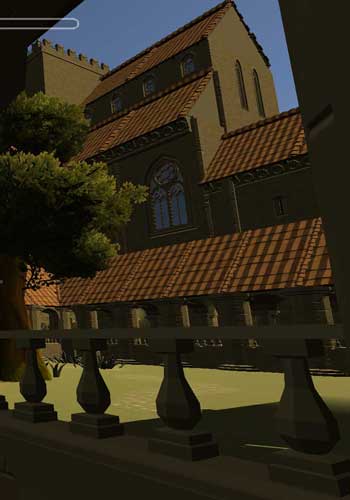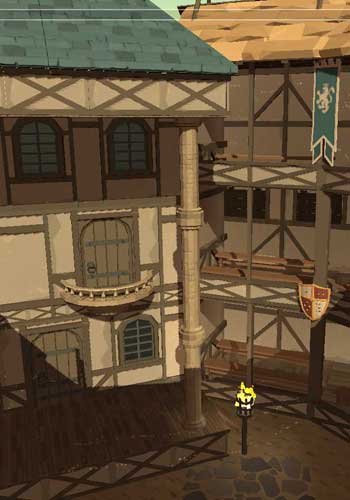Timeline
Edward the future king of England was born at Windsor Castle and was known as Edward Windsor.
In England, King Edward II was persuaded not to go to France by the Despensers. The Despensers were worried that because their position of power in England was precarious, if Edward left the country they could easily lose that power. Instead, it was decided that the King's son Prince Edward, only thirteen years old should go to France and pay homage instead. Before the prince left for France, the King bestowed the title of Count of Ponthieu on his son and the French King gave consent for him to to have Aquitaine as well. On the 12th of September Prince Edward left England and sailed to France. [1]
Prince Edward met Charles IV and paid him homage. The French king gave the Prince the title of Duke of Aquitaine and informed the English King that the French were going to retain the Agenais, an area of southwest France. Prince Edward had effectively been captured and his mother, Isabella the English Queen, had begun the plans of removing her husband from the throne of England. [1]
At a Parliament called to discuss the situation in France, it was decided to send a petition to Isabella for her return to England. She refused. In France, her brother the King had become annoyed with Isabella's conduct. Isabella left France and went to the court of William II, Count of Hainault who assisted her with preparations to invade England. A promise was made to marry Prince Edward, now Duke of Aquitaine to William's daughter Philippa. [1]
Isabella arranged the future marriage between her son Edward and Philippa the daughter of William count of Hainault. Isabella claimed part of Philippa's dowry in advance so that she could finance her invasion of England. [2]
Isabella of France the wife of King Edward II entered Bristol and was welcomed by the citizens there. The Earl of Winchester who had taken to the castle decided the best action was surrender. He was executed on the 27th of October as a traitor.
King Edward II was forced to abdicate when Parliament agreed that his son should become king of England.
King Edward III succeeded his father to the English throne on the 25th of January and was crowned at Westminster Abbey a few days later by Archbishop Walter Reynolds. [3]
King Edward III married Philippa of Hainault at York Minster. The marriage was arranged as many were at the time. The arrangement was organised as early as 1323, when she was not yet nine years old. The Bishop of Exeter visited Hainault to see the girl. [4]
Charles IV died at the castle at Vincennes. The next rightful claimant to the French throne was not clear-cut as Charles had no male heir. Isabella, the sister of Charles, had married Edward II and their son Edward III had just taken on the rule of England. Isabella put in a claim for her son although in French law it was not possible to inherit the throne through the female line. [4]
In the Treaty of Northampton England recognised the Declaration of Arbroath drawn up by Robert the Bruce in 1320. Scotland was accepted as an independent country under the rule of Robert.
King Philippe VI of France was crowned at Reims Cathedral. In England, Isabella, the mother of King Edward III, declared that her son should be the French King as she, as the elder sister of the late King of France, Charles IV, had a better claim.
Philippe of Valois summoned Edward to travel to France and do him homage for lands that Edward held in south western and northern France. [5]
At Amiens, King Edward III agreed to do homage to Philippe of Valois for the lands he held in Aquitaine. Edward did not place his hands between Philippe's, a sign of total loyalty which would have been hard to reverse, as Edward was unhappy about Philippe's claim to the French throne. Edward was hoping diplomatic endeavours would help his position and wanted Philippe's daughter Joan to marry his first son Edward the Black Prince. [4]
King Edward III gave the castle at Sherborne to the Earl of Salisbury.
Mortimer arrested Edmund, Earl of Kent for openly opposing Queen Isabella and Mortimer himself. This act was the catalyst for Edward II to arrest Mortimer for treason.
Philiippa of Hainault, the wife of King Edward III, was crowned at Westminster Abbey.
Edward was born at the royal manor of Woodstock. [2]
King Edward III ordered the arrest of Roger Mortimer. The King and some loyal supporters entered Nottingham Castle via a secret passage in the rocks and Roger Mortimer was arrested.
Mortimer was tried before Parliament and executed.
King Edward III invited weavers from Flanders to come to England and start production of cloth. It was cheaper to produce the cloth in England as much of the raw material was locally produced. Edward promised the weavers his protection.
In disguise Edward travelled to France to meet Philippe VI. At the meeting it was agreed that Edward did not have to do homage for Aquitaine.
Isabella, the daughter of King Edward III and Philippa of Hainault, was born.
Edward Balliol took a small army of men, including archers, into Scotland to take back the Scottish throne.
Before Edward's army returned to England they attacked Holyrood Abbey, destroying the shrines and taking the gold and silver vessels that were used in the ceremonies.
Edward Balliol was crowned king of Scotland at Scone but was quickly forced over the border back to England prompting King Edward III's assaults. [4]
Edward (the Black Prince) was given the title Earl of Chester. [2]
King Edward had positioned his army on Halidon Hill overlooking Berwick which he had under siege. He choose the location because it allowed him to look out for the Scots who may try and relieve the Scottish who were besieged with the town. A Scottish force tried to get to Berwick put were defeated by Edward's army. King Edward III's attacks on Scotland and victory at Halidon Hill put Edward Balliol back on the Scottish throne for four more years. Robert (II), the future King of the Scots, was one of the Scottish commanders at the battle of Halidon Hill. [4]
After the defeat of their relief force at Halidon Hill the day before, the Scots holding out in Berwick had no option but surrender to the English and King Edward III.
King Edward III, assisted by Balliol, moved up through Scotland. There was a chance that the French would invade while the King was in the North as Philippe VI had sent ships to help the Scottish cause. [2]
Louis de Nevers, the count of Flanders from 1322, prohibited trade with England in an attempt to control the powerful cloth-weavers in the area. Louis suspected some kind of link between the weavers and England and so he banned the trade of wool to cut the supplies that their wealth relied on. King Edward III counteracted with by changing the only continental port where wool was imported to from Bruges to Antwerp. [4]
Edward, the Black Prince, was given the title Duke of Cornwall by his father King Edward III. The estate was created at this time is order to provide an annual income for the Prince and for future eldest sons of the monarch. [6]
Two cardinals, Peter Gomez and Bertrand of Montfavence, were sent by Pope Benedict XII to Europe to try and prevent King Edward III of England and Philipe VI of France going to war. [7]
King Edward III reached Stirling Castle with supplies to assist the English garrison there that was under siege from Sir Andrew Moray. [8]
Relations between England and France were not good. Philippe VI the French King had sent ships to help the Scots who were attacking English merchant shipping and ports. There was the threat that the French would invade England. King Edward III then laid a claim to the French throne. The claim centred on the fact that Isabella, his mother, was the daughter of Philippe IV of France. All of Philippe's sons John I, Philippe V and Charles IV had died without passing the French throne onto a son. On his death-bed Charles IV designated Philippe of Valois, his first cousin, as regent. Charles' wife was expecting a child and it was hoped that the child would be a boy. The child was a girl and Philippe of Valois claimed the throne for himself. Edward's claim to the throne was disputed because in French law it was stated that the line of succession could not pass through the female line. Philippe VI then declared that all of the English held lands in France were forfeit. These events were the start of conflict between England and France that would last on and off for more than one hundred years. [9]
King Edward III sent an expedition to the island of Cadsand, a few miles up the coast from Calais, where ships belonging to Louis of Flanders were being used to attack English ships. The English, led by Sir Walter Manny, took the island.
With the promised help of the counts of Hainault and Namur Edward took his army into northern France. The Counts changed their minds as they had lands to lose if they fought against Philippe. Edward continued without their help and the English confronted the French at La Fremengerie. The French refused to fight and the English, short of supplies, turned back. [2]
In Ghent (Flanders) Edward declared himself as the true King of France. When he left Flanders for England Philippa remained as assurance that money Edward owed would be paid. [2]
A grand tournament was held at Norwich attended by King Edward III and Queen Phillippa. [10]
Parliament agreed to raise taxes so that Edward could fund an army to invade France. [2]
A naval battle between the English and French. The French tried to prevent the English ships landing at Flanders. The French were defeated by Edward's forces. Edward did not follow up with the advantage.
King Edward III besieged the important French town of Tournai. The town proved impossible to break and when King Philippe VI arrived nearby with an army a truce was agreed. The truce with mediated by Philippe's sister who was also Edward's mother-in-law. The truce lasted until June of 1341. [2]
The Treaty of Esplechin was a peace treaty between King Edward III of England and Philippe VI of France. Edward had large debts and further campaigning was not possible so he accepted that the truce between the two kings was the best course of action. This treaty marked the end of the first phase of the Hundred Years War.
Edward travelled back to England and came ashore at the Tower of London. He was horrified to find the castle unguarded. His anger did not stop with those in charge at the Tower. Edward sacked many of his advisors including the Chancellor, John Stratford, the Archbishop of Canterbury. [2]
To raise funds for further French expeditions Edward had to confront Parliament. Parliament insisted that Edward reconfirmed various ancient charters. [2]
After the fall of Edinburgh Castle and the liberation of the northern areas of Scotland it was safe for the Scottish King to return from exile in France.
Edward went north to deal with the threat posed by David's return to Scotland. [2]
King Edward III of England and King David II of Scotland agreed peace terms and Edward returned to London. [2]
Edward sailed to Brittany to assist English troops already there. They were supporting Jean de Montfort's claim to be the Duke of Brittany. Philippe, king of France, disputed this claim and supported his own contender to the title. Edward left his eldest son in charge of England while he was away. [2]
Edward had to control Vannes if he was to hold Brittany and he laid siege to the city. The city did not fall to the English. [2]
After a hard winter without any new gains in France Edward signed a new peace treaty with the French and returned to England. [2]
Edward, the Black Prince, was bestowed with the title of Prince of Wales by his father King Edward III at a ceremony at Westminster. [2]
King Edward III again visits Norwich nad grants castle-ditches to it's citizens. [10]
A jousting tournament at Windsor Castle may have been the time of the creation of the Order of the Garter based on King Arthur's knights of the Round Table. A huge circular hall was built within the grounds of the castle just for the event. The hall is supposed to have been 200 feet in diameter. The formal creation of the Order occurred later in 1348. [11]
King Edward travelled to Flanders landing at Sluys. He took his son, the Prince of Wales and attempted to have the masters of the nearby towns accept the prince as their Lord. But the murder of Van Artevelde, a wealthy commercial trader accused of accepting money for supporting the English King put an end to the plans.
Edward gives permission to William de Clinton to build a castle. [11]
King Edward III gave the order that an invasion fleet should be assembled at Portsmouth harbour. [2]
King Edward III's invasion fleet finally left Southampton harbour, delayed by bad weather earlier in the year. Estimates of the number of men Edward took with him vary but could have been around 20,000. This would have required hundreds of ships to transport them all. [2]
King Edward III's invasion fleet landed on the north west coast of Normandy at Saint-Vaast de la Hougue on the Cotentin Peninsula (also known as the Cherbourg Peninsula). Edward stayed there for several days while the large army came ashore. [2]
King Edward III's army began their march east across Normandy attacking and destroying French towns as they went. Those towns that did not surrender were shown no mercy and when they fell to the English many of the inhabitants were killed. Other towns surrendered to avoid bloodshed. Many hostages were taken and shipped back to England so that ransom money could be demanded. The English fleet sailed along the coast at the same time destroying French ships and attacking ports as they went.
King Philippe VI of France had ordered bridges across the Seine to be destroyed so that King Edward III could not cross the river. Edward marched south towards Paris but at Poissy his engineers managed to repair the bridge. His army crossed the river and turned north.
Under King Edward III, the English forces defeated a superior French army at Crecy. Estimates give the English numbers at around 12,000 and a French contingent at 36,000. The English longbow made its mark in the battle against the armour of the French knights.
King Edward III began the siege of Calais that would last for almost a year. The governor of the town was man called Jean de Vienne. Edward demanded that the town should surrender but de Vienne refused, hoping that the town walls would hold the English out until King Philippe VI could come to their rescue. The English set up camp around the town and arranged for supplies to be brought from England. Wooden houses were also built to house the soldiers while they waited. Edward's wife Philippa even joined her husband at the camp.
During the absence of King Edward III while he was on campaign in France the Scottish king David II was approached by the French King Philippe VI to invade England. David II did so and advanced south. On the way to Corbridge the army captured Aydon Castle, allowing the inhabitants to leave safely if they handed the castle over. At Neville's Cross the Scottish were defeated by a band of monks, priests and land workers led by the archbishop of York, William Zouche. David II was captured and sent to London to be held at the Tower. [4]
Kipchak Mongols besieging a Genoese trading centre on the Crimean coast catapulted their own dead into the city. The cause of death was a mysterious disease. The Genoese escaped by sea taking the 'Black Death' with them. They landed at Messina in Sicily. Black Death or Bubonic plague was spread by the rat flea. The name Black Death came from the colour of the swelling in the groin, armpit or neck. The person suffering went into a coma and dies soon after. In Europe an estimated 25 million people died. The plague reached Britain in 1348 and again in 1360 and the population may have been reduced by a half. [9]
Philippe VI finally arrived at Calais and challenged King Edward III to a fight. Edward agreed but instead Philippe withdrew abandoning the town to the English. The governor, Jean de Vienne, had no other option other than to surrender the town to Edward. The town's leaders should have been executed according to siege rules because they refused to surrender when first asked, but Edward spared their lives and they were taken as hostages. The town of Calais was emptied of all its citizens and all their property was confiscated. Edward then made Calais English territory and sent word to England that anyone who wanted to live in Calais was welcome as long as they could get there quickly.
King Edward III accepted a truce with France as the efforts abroad had been exhausting and he returned to England. Edward's popularity was high as he had beaten the French at Crecy and in his absence the Scots had been defeated at Neville's Cross.
King Edward III of England established the Order of the Garter, the first English order of knighthood. It was based on the Knights of the Round Table and King Arthur. The name of the order is supposed to have originated when Edward III picked up a garter that had been lost on the dance floor during a banquet. Edward tied the garter around his own leg telling all present not to pass judgement. The garter may have belonged to the beautiful Joan of Kent. Joan was later to marry Edward's son, the Black Prince.
At the Tower of London King Edward III had a water gate constructed at the base of the Cradle Tower. This allowed access to royal apartments directly from the river.
On St. George's Day at Windsor Castle, the Order of the Garter was created. The initial Knights of the Order were: The King (Edward III); the Prince of Wales (The Black Prince); Henry, Earl (afterwards Duke) of Lancaster; Thomas Beauchamp, 3rd Earl of Warwick; the Captal of Buch; Ralph, Lord Stafford; Motacute, Earl of Salisbury; Sir Roger Mortimer; Sir John (afterward Lord) Lisle; Sir Bartholomew (afterwards Lord) Burghershe; Sir John Beauchamp; Lord Mohun; Sir Hugh Courtenay; Sir Thomas Holland; Lord Grey; Sir Richard FitzSimon; Sir Myles Stapleton; Sir Thomas Wales; Sir Hugh Wrottesley; Sir Neel Loryng; Sir John Chandos; Sir James Audley; Sir Otho Holland; Sir Henry Eam; Sir Sanchete d'Ambrichecourt; and Sir Walter Paveley. [11]
Spain had signed a naval treaty with France and a fleet of Spanish galleys sailed past France and up the English Channel attacking English ships as it went.
The Spanish fleet was returning from Sluys where it had stayed over winter. King Edward III had taken his time and prepared an English fleet that could attack the Spanish boats as they came back down the English Channel. The two fleets met off the south coast near Winchelsea. Fierce hand-to-hand fighting took place as the ships, using grappling hooks, came together. Both Edward III and his son the Black Prince took part in the battle and defeated the Spanish. [2]
King Edward III makes Henry of Grosmont the Duke of Lancaster.
King Edward III founded a new Cistercian abbey near the Tower of London. Monks from Beaulieu Abbey populated the new abbey. [12]
After the death of Isabella de Fortibus in 1293 Carisbrooke Castle became the property of King Edward I and the Crown. In 1355 King Edward III granted the ownership of the castle to his daughter Isabel.
Thomas of Woodstock was born to Philippa and King Edward III.
King Edward III landed in Calais. His plan was to lay waste to the northern lands owned by France. [2]
After the defeat of David II of Scotland at Neville's Cross Edward Balliol had attempted to claim the Scottish throne but eventually decided to surrender his title as King of the Scots to Edward III and accept a pension in return.
King John of France was held prisoner at St. Alban's monastery after being captured at Poitiers. [13]
On behalf of the King of England, Edward, the Black Prince arranged a two year truce with John, the King of France at Bordeaux.
The Black Prince with the French king and many other prisoners began the journey from France to England. Once back in England these nobles were ransomed for large amounts of money.
The Treaty of Berwick, signed between King Edward III of England and David II of Scotland, allowed David to go free from prison where he had been kept for the previous 11 years. A ransom of 100,000 marks was the price of his freedom.
To celebrate St. George's day King Edward III held a large tournament at Windsor Castle. Edward, the Black Prince, oversaw the proceedings in which kings and nobles from all over Europe were given safe passage to take part in.
This treaty attempted to agree peace between England and France and the release of the French King, John, from captivity. The terms the King Edward III wanted, were a large ransom and the surrender of several French states. The French did not raise the money required so the treaty was not concluded.
Queen Isabella, the wife of Edward II and the mother of King Edward III died on the 22nd or 23rd of August.
A violent storm killed many of King Edward's horses and men, just two leagues from Chartres. [14]
This treaty signed by King Edward and King John of France who was still a captive was agreed but later rejected by those back in France. In the treaty Edward agreed to drop his claim to the French thone in return for large amounts of French land. The French rejected the treaty because of the amount of land that would have been lost. King Edward's anger led to his invasion of France later in the year.
Edward and his eldest sons departed from England and arrived in Calais the same day. They met no resistance as they marched to Reims. But the town was too well fortified to be captured so the English troops spent their time attacking the local towns and villages and taking supplies.
The Treaty of Bretigny brought a period of peace for nine years during the Hundred Years War. The treaty was arranged between the Black Prince and the dauphin the future King Charles V of France before being approved by King Edward III of England and King John of France. As part of the treaty Edward was given control of the areas of Gascony, Calais and Ponthieu as long as he agreed to give up his claim for the French throne. King John of France, currently being held hostage in England, was to be released on condition of a payment of 3 million gold crowns to be paid in instalments.
At Calais King Edward III of England and King John of France, who had be released from captivity, signed the Treaty of Bretigny.
Queenborough Castle was built by King Edward III and named after his wife Philippa of Hainault.
King King Edward III transferred control of Gascony to his eldest son, the Black Prince. Edward the Black Prince had just married Joan of Kent at Windsor and together they created a magnificent court in Bordeaux.
At a confererence held at Westminster, King Edward III of England and David II of Scotland discussed the issues of the non-payment of the ransom agreed upon at the Treaty of Berwick several years earlier. It was agreed that the outstanding amount did not have to be paid if Edward or one of his sons would become King of Scotland after the death of David.
The English Parliament freed King Edward III from the Treaty of Bretigny that was signed in 1360. When Edward signed the treaty he had agreed to give up the claim for the French throne. Now that Edward was free from the treaty he was able to restate and pursue his claim to be the French King. [2]
Queen Philippa, Edward's wife, died. Edward's affections turned to Alice Perrers who became his mistress and had several illegitimate children. [2]
King Edward III granted the castle at Knaresborough to his son John of Gaunt. This couild have been in 1371.
The Battle of La Rochelle was a Castilian-English naval battle fought at the entrance of the harbour of La Rochelle on the French coast in the Bay of Biscay. Commanded by John Hastings, the English fleet had been sent to rescue the town that was being besieged by the French. Both fleets sides were equally matched but after two days of fighting the English fleet was totally destroyed and many of the English sailors and knights had been killed or captured.
John Wycliffe was sent to Bruges as one of several Royal Commissioners to discuss conflicts between King Edward and Pope Gregory XI.
The Commons accused several of the king's advisers of misusing public money for their own gain and lending money to the king at a hgh level of interest. The motions were supported by the Black Prince who was ill at this time. The king's mistress Alice Perrers was banished from Court.
King Edward III of England died in June 1377. One year earlier Edward's eldest son and heir to the throne, Edward the Black Prince died. Richard, the son of the Black Prince, was proclaimed heir to the throne. King Edward was ill for some time before his death, and John of Gaunt, another of Edward's sons, took the affairs of the nation under his control. Edward was buried in Westminster Abbey in a tomb designed by Henry Yevele. [15]
Richard, the son of Edward the Black Prince, and grandson of King Edward III, became king.
Selection of references used:
- 1: Caroline Bingham, The Life and Times of Edward II
- 2: Hubert Cole, The Black Prince, 1976, ISBN:0-246-10778-2, Granada Publishing Limited (1976), Own copy
- 3: Alan LLoyd, The Hundred Years War
- 4: John Harvey, The Black Prince and his age, ISBN:0-7134-3148-2, Erdington Library
- 5: William Toone, The Chronological Historian, 1828
- 6: David Green, The Black Prince
- 7: T.F. Tout, The History of England
- 8: Susan Ross, The Castles of Scotland, ISBN:0-85097-184-5
- 9: John J. Robinson, Born in Blood, ISBN:0-87131-602-1, M. Evans & Company / New York, Geoff Bath
- 10: Unknown, A topographical and historical account of Norwich, 1819
- 11: E.B.D'Auvergne, The English Castles, 1926, T.Werner Laurie Ltd. (1926)
- 12: Derek Wilson, The Tower (1078 - 1978)
- 13: T. Francis Bumpus, The Cathedrals of England and Wales, 1934
- 14: Unknown, The New Tablet of Memory, 1838
- 15: Michael Senior, The Life and Times of Richard II, 1981, George Weidenfeld (1981), Erdington Library
Explore the White Tower
Explore all four floors of the White Tower at the Tower of London using the Unity 3d game engine.
A Medieval Mystery
There appear to be some strange connections between the fourteenth century Old Wardour Castle and ancient stone circle Stonehenge.
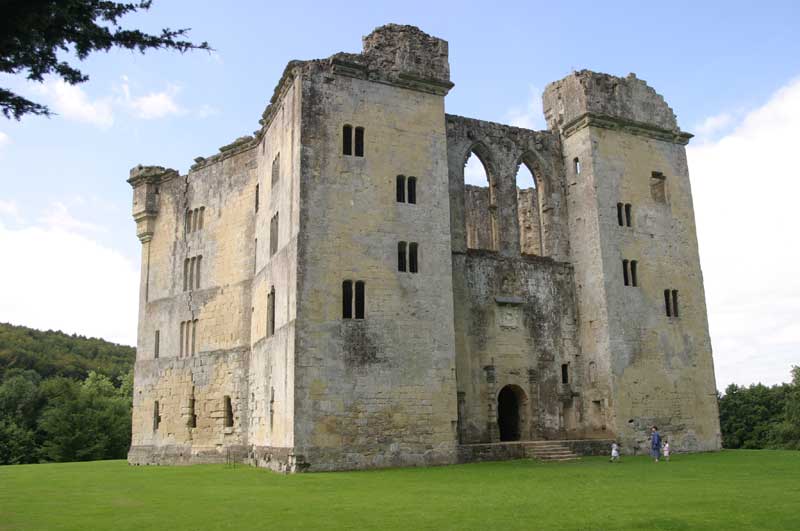
1: Location
Old Wardour Castle appears to be aligned to ancient sites in the Stonehenge landscape.
2: Alignment
Stonehenge is aligned to the Summer Solstice. Old Wardour has a very similar alignment.
3: Size
Could the builders of Old Wardour used mesaurements from Stonehenge to layout the geometrical keep?
Learn More

